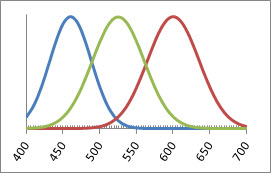But I guess this doesn't make the answer much better.
--Betty
Moderators: rjlittlefield, ChrisR, Chris S., Pau
Well, sure, for some definition of "something like it". My images are generated entirely by my own software, and there were no masks involved, but otherwise I imagine there are a lot of similarities.TheLostVertex wrote:Looking aorund I discovered a program called Maskulator. I wonder if this, or something like it is playing a role in the creation of this mystery.
I am honored by the complexity, but in fact the setup I used is far simpler than that. As I wrote earlier, "The optics setups for these shots are actually the rear ends of classic setups involving Mitutoyo objectives, with two unusual adjustments. " This description is quite literal. The sequence and orientation of all optical components is exactly what I use routinely with Mitutoyo objectives, minus the objectives. The difference is in what's being looked at, plus those two unusual adjustments I mentioned.How about an infinity objective without its tube lens, sitting on a corrective eyepeice with an aperture placed between the objective and eyepeice or eyepeice and camera
Ah, sorry, no polarizing filters or gratings in the setup.g4lab wrote:Do the variations in the set up involve polarizing filters or diffraction gratings?

What you've described is part of the normal setup. When properly configured for use with the objective, the tube lens is supposed to be focused at infinity. A simple way to set or check that is to remove the objective and focus on a distant object.g4lab wrote:So you must have removed the objective and racked the tube length back and to focus it at infinity where the star/ aperture was located. ? ?
This is definitely on the right track...Pau wrote:Is just that diaphragm full closed?
So, not full closed -- that iris goes to under 1 mm -- but definitely stopped down more than normal, around effective f/80 instead of f/18 like it would be with just the objective in place.earlier, rjlittlefield wrote:shot with a lens, aperture diameter 2.5 mm.
DQE wrote:Is the light source unusual in any way(s)?
In particular, I am thinking about light sources with complex spectra.
Also, is the intensity profile of the light source relevant?
